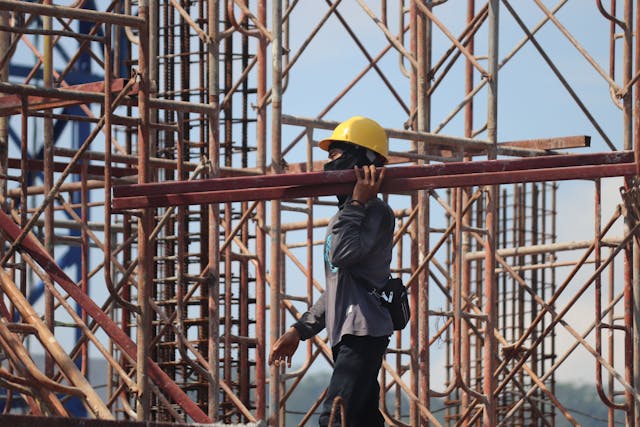- Regular audits and inspections are essential for maintaining safety systems.
- Employee feedback is valuable for improving safety measures and support systems.
- Adapting to new regulations and risks ensures ongoing compliance and risk mitigation.
- A step-by-step approach can help businesses strengthen workplace safety.
- A safety-conscious culture is integral to long-term success.
Workplace safety is no longer an optional perk in the modern corporate landscape but an essential framework for successful business operations. A comprehensive approach that encompasses both physical and mental well-being is a moral responsibility and a strategic business advantage.
With the rise of remote work and the increasing emphasis on employee welfare, it’s more critical than ever for businesses to fortify their safety and support systems. In this guide, we will explore the multifaceted nature of workplace safety and the practical steps businesses can take to ensure a secure and supportive working environment.
The Pillars of Workplace Safety
Creating a safe work environment hinges on several key pillars, each complementing the others to form a robust protective structure.
Legal Compliance and Safety Policies
The foundation of workplace safety is adherence to laws and regulations. By having comprehensive safety policies that go beyond the minimum legal requirements, businesses can demonstrate their commitment to the well-being of their staff and preempt potential hazards.
Risk Assessment and Mitigation
Proactive risk assessment plays a crucial role in identifying and mitigating workplace dangers. Regular inspections, employee input, and benchmarking against industry best practices can help businesses stay ahead of safety concerns.
Employee Training and Engagement

A well-informed workforce is the first line of defense against workplace accidents. Ongoing training and fostering a culture of participation in safety protocols reduce risks and empower employees to take ownership of their well-being.
Enhancing Support Systems for a Safer Workplace
Safety doesn’t stop at preventing physical harm; it must extend to providing robust support systems to help employees in the event of an injury or traumatic incident.
Efficient Workers’ Compensation Claims Management
Navigating the complexities of workers’ compensation can be stressful for injured employees. Streamlining the claims process and providing clear guidance can make a significant difference in their recovery while minimizing disruptions to daily business operations.
Opting for workers’ compensation claims management service can help businesses deliver timely and fair compensation to their employees while also ensuring compliance with legal obligations. These services can also provide valuable data and insights to identify patterns and prevent future accidents so that businesses can continuously improve their safety protocols.
Mental Health and Wellness Programs
Recognizing the impact of mental health on workplace safety is a crucial step toward holistic employee care. Implementing wellness programs that address stress, anxiety, and burnout ensures employees have the tools and resources to maintain their mental well-being.
Emergency Preparedness and Response Training
Effective emergency response starts with preparedness. Regular training exercises and clearly defined protocols allow for a seamless, coordinated response to workplace emergencies, reducing harm and panic.
Cultivating a Culture of Safety and Support
A culture that values safety and support is one where every employee’s concerns are taken seriously and where co-workers feel empowered to look out for one another. This environment fosters trust, loyalty, and a shared commitment to the organization’s well-being.
When you prioritize workplace safety and support, you not only create a healthy work environment but also demonstrate to your employees that their well-being is a top priority. This can lead to increased productivity, higher job satisfaction, and lower turnover rates – all of which positively impact your bottom line.
Measuring and Maintaining Safety Standards

Continuous evaluation is crucial to ensuring that safety standards are being met and that support systems are effective and up-to-date.
- Regular Audits and Inspections: Routine checks and audits help maintain the physical infrastructure of safety systems. It’s important to review, update, and test equipment and keep an eye out for any changes in the workplace that could pose new risks.
- Feedback Mechanisms and Employee Surveys: Employee input can provide invaluable insights into the effectiveness of safety measures and support systems. Establishing comprehensive feedback mechanisms and conducting regular surveys ensures that measures are continually improved to meet evolving needs.
- Adaptation to New Regulations and Risks: Workplace safety is a dynamic field with constantly evolving best practices and regulations. Stay ahead of the curve by regularly reviewing and adjusting policies to comply with the latest standards and to address emerging risks.
Conclusion: A Dual Focus for Enduring Success
Following this guide, businesses can take a step-by-step approach to bolstering workplace safety and support structures. From the foundation laid by legal compliance and risk mitigation to the daily reinforcement of a safety-conscious culture, every action moves the company toward a more secure and supportive environment for its employees. Business leaders who take this guide to heart will undoubtedly see the positive ripple effects throughout their organizations, where a thriving workforce is the heart of enduring success.



